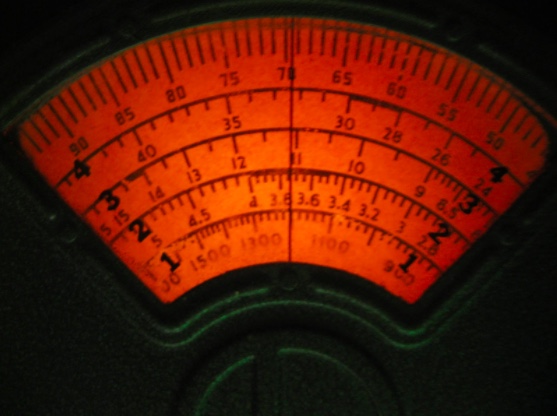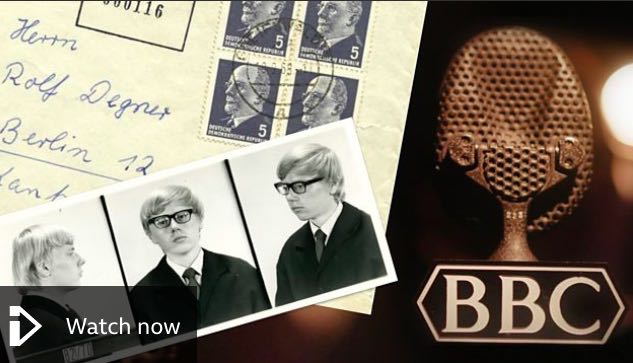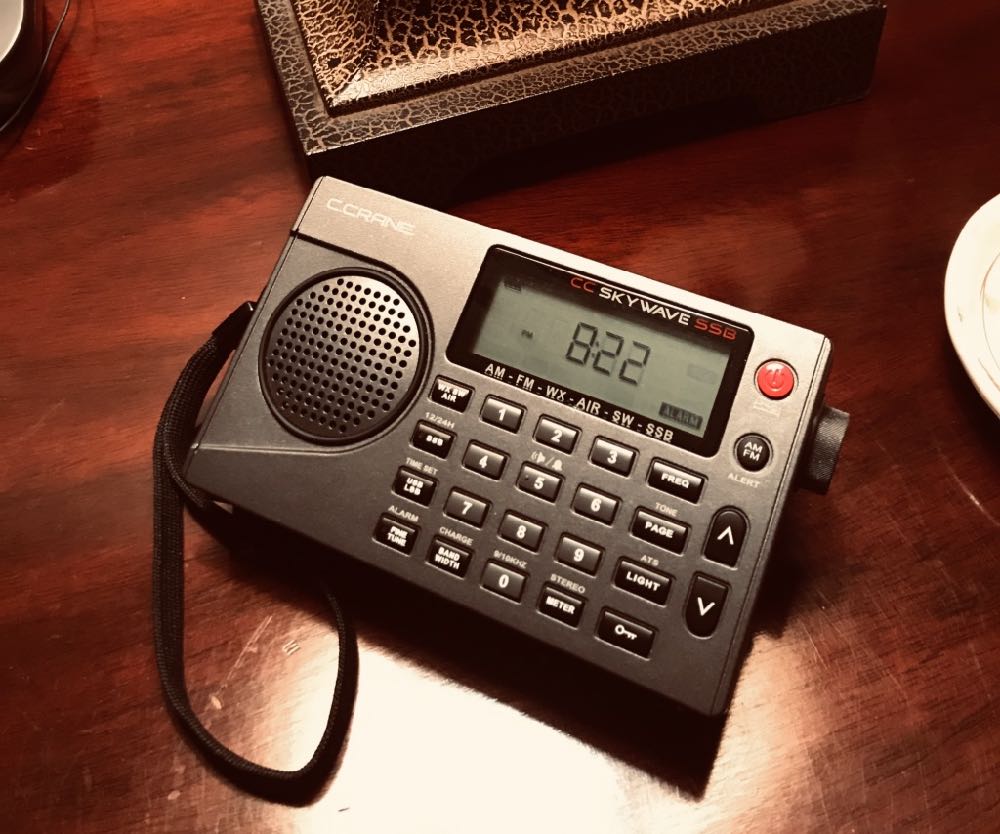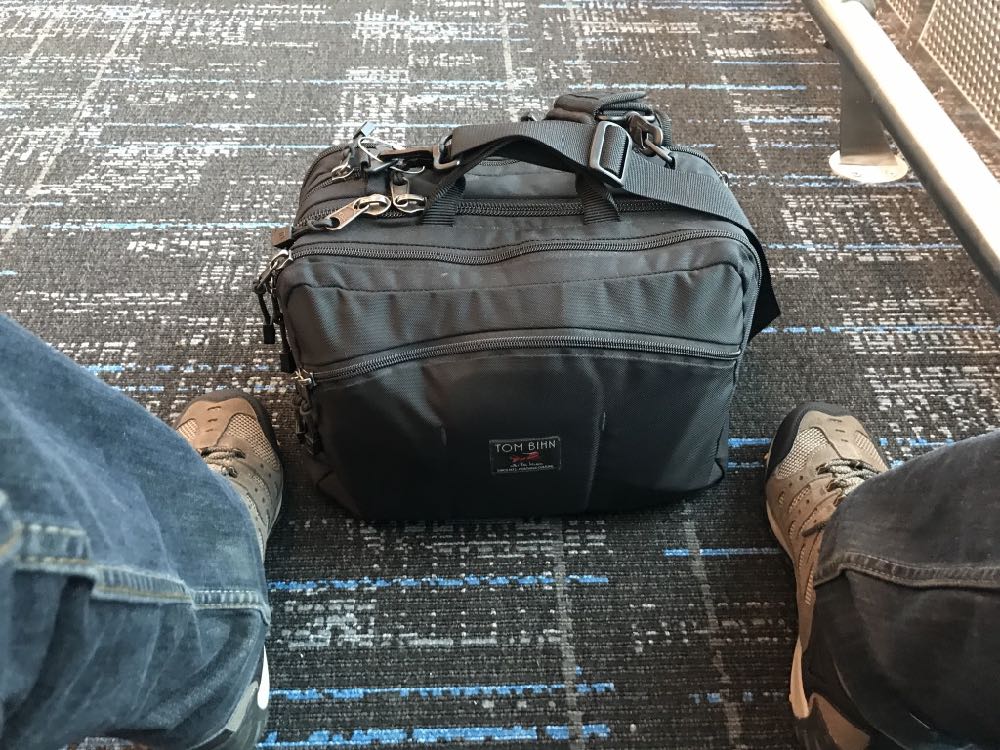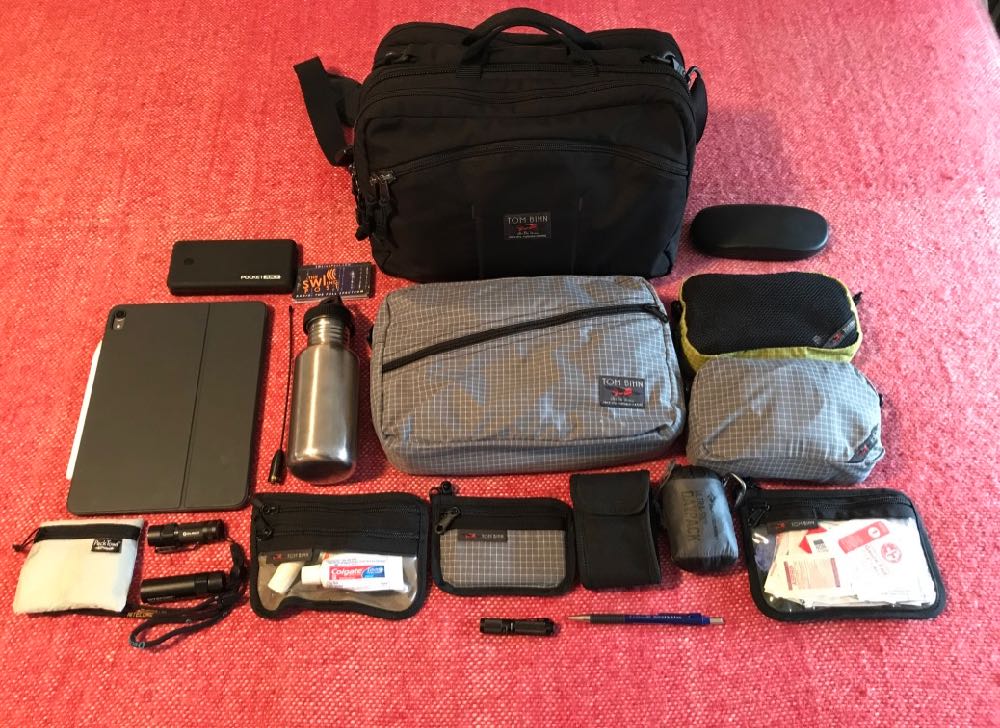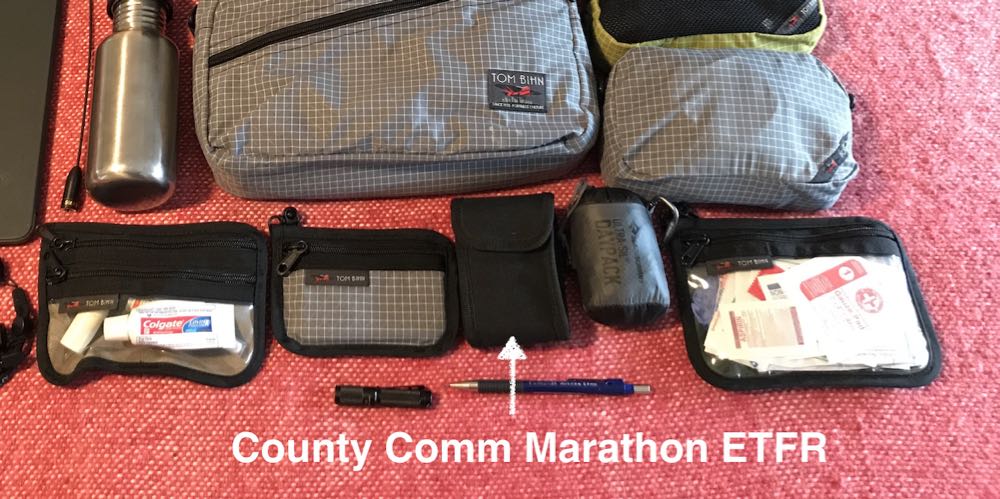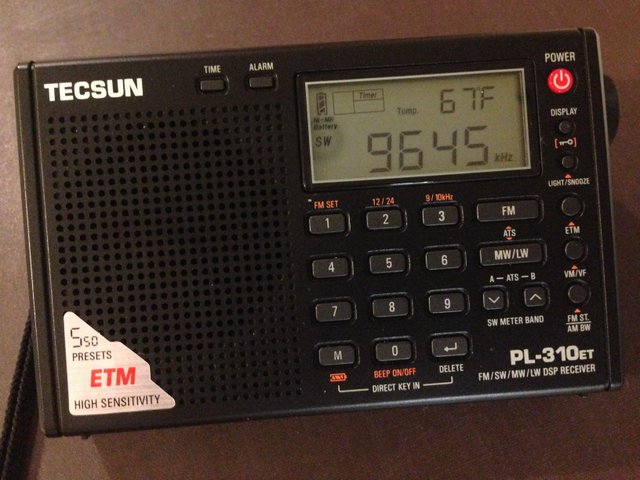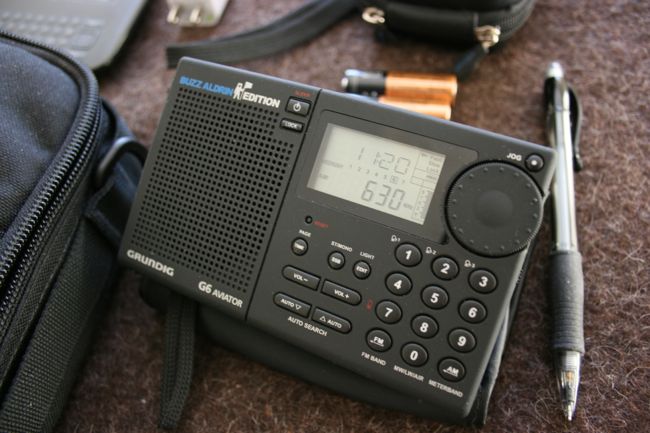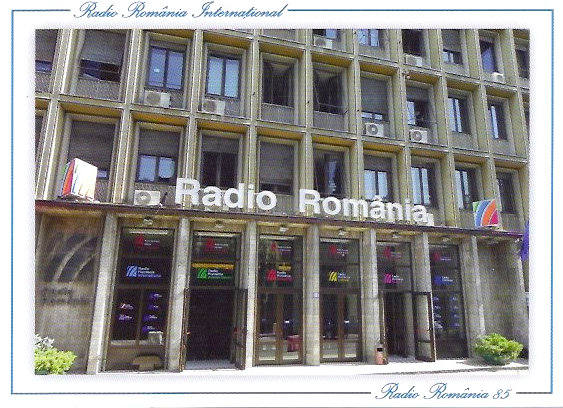Secure federal facility interfering with garage door openers?
 Many thanks to SWLing Post contributor, Jakon Hays, who shares a link to the following article at Inside NOVA:
Many thanks to SWLing Post contributor, Jakon Hays, who shares a link to the following article at Inside NOVA:
A top-secret and secure federal government facility just northwest of Warrenton admitted this week it may be responsible for crippling dozens of garage door openers in two nearby subdivisions, FauquierNow.com’s Don Del Ross writes.
More than 70 Olde Gold Cup and Silver Cup Estates homeowners have reported that openers started to fail about two weeks ago, according to Betty Compton, Olde Gold Cup’s Neighborhood Watch group coordinator.
Warrenton Training Center B, a classified federal facility, issued a statement this week saying its radios may be to blame.[…]
Click here to read the full article.
This is interesting. I’ve heard this is a very common complaint in/around large broadcast facilities. Whether or not it’s always true is up for debate, but I should think it would be easy to test the RF environment in the area and confirm.
BBC Witness History: “Britain’s secret propaganda war”
Check out this brilliant BBC Witness History piece regarding the British propaganda effort during WWII:
How sex, jazz and ‘fake news’ were used to undermine the Nazis in World War Two. In 1941, the UK created a top secret propaganda department, the Political Warfare Executive to wage psychological warfare on the German war machine. It was responsible for spreading rumours, generating fake news, leaflet drops and creating fake clandestine German radio stations to spread misinformation and erode enemy morale. We hear archive recordings of those involved and speak to professor Jo Fox of the Institute of Historical Research about the secret history of British “black propaganda”.
Click here to listen to this program via the BBC Witness History website.
BBC Program: “London Calling: Cold War Letters”
Many thanks to SWLing Post contributor, David (G4EDR), who writes:
Looking forward to this documentary TV programme tonight. Looks like it will be about the BBC WS during the cold war.
Thanks for the tip, David!
Readers, my post is a bit late–David sent this two days ago. Still, the program is on the BBC website for a few more weeks, however it is very much geo-blocked so you’ll need a work-around if viewing from outside the UK.
It’s not a travel radio if it doesn’t have an alarm clock
I have a pretty accurate body clock. Regardless of when I doze off, I always wake up at the same time.
When I’m at home on my regular schedule, I trust my “internal chronometer” so much, I haven’t set an alarm in years.
When I travel, it’s a completely different story…
It’s a rare occurrence when a flight, train, or even road trip allow me to wake up at my normal time, so I rely on an alarm clock.
In fact, I’ll let you in on a little secret: I’m a nervous Nellie when I’m forced to break my sleep cycle to catch an early flight. My fear of missing a flight may even border on paranoia–I’ll wake up multiple times during the night in a panic unless I feel completely at ease that there’s an alarm system in place to wake me no matter what.
I recently told a friend about this fear and he asked, “Why not just set the alarm on your phone?!”
Simple answer: I don’t trust smart phones and tablets. They’re too complicated with so many nighttime settings, alarm/alert volume levels, short battery life, etc. etc.
Case in point…
Earlier this year, I had to catch an early flight and needed to wake up at 4:00 AM, so I scheduled my iPhone and iPad to alarm at 4:00. (When at home, I try to have my iPhone/iPad wake me first, because the alarm is very gradual and doesn’t disturb my wife.) Of course, I also set my travel radio’s alarm clock for 4:10, as a fail safe.
Knowing I had a total of three(!!!) alarm clocks set, I slept like a baby.
At 4:10 AM, my travel radio alarm started beeping. The iPhone and iPad were completely silent.
Turns out, the iPad decided to do an operating system update during the night. For some reason, after rebooting, it simply forgot about the alarm. (Thanks, iPad!) And the iPhone? I’m still not sure how/why, but the mute switch on the side of the phone was engaged and if it vibrated to wake me, I never heard it rumbling on the night stand.
Thank goodness the travel radio had my back, else I would have missed that flight.
Travel radios: Never leave home without one!
I like to be a self-sufficient traveler even though I only travel with one bag and pack very lightly. I never rely on my destination to have a functioning alarm clock (with battery backup, of course) or effective wake up call service. Regardless of how minimally I pack, I always take a travel radio.
In February, for example, I travelled to Philadelphia for the Winter SWL Fest. Even though my trip was nearly a week long, to keep from paying a carry-on fee with Frontier airlines, I packed everything in a bag that met their strict “personal carry-on” bag size.
Regular readers know I’m a bit of a pack geek, so my bag of choice was the Tom Bihn Stowaway. Here’s the bag fully packed out at my feet in the airport:
Here’s a photo of everything I packed in the Stowaway for that trip:
This particular trip really pushed the limits on my minimalist travel philosophy. Honestly? It was a fun challenge! I had to hone my pack contents down to only the essentials (don’t make fun of me for believing three flashlights were essential–the previous year, our hotel was without power for several days).
Still, I made room for one of the smallest travel radios in my arsenal: the County Comm Marathon ETFR:
I chose the ETFR because it has a custom case that could attach to my belt or pack strap if interior space became too tight. The ETFR radio hasn’t been in production for a decade, but it’s an effective radio companion and the alarm works without fail.
Choosing a travel radio
Most modern digital portables are based on DSP chips that have clock and alarm functions, so you might already own an effective travel radio.
With that said, I always prioritize radio features that benefit a traveler, of course; here are some that I look for:
- Small size: Naturally, it’s sensible to look for a travel radio that’s small for its receiver class for ease in packing.
- Overall sturdy chassis: Any travel radio should have a sturdy body case that can withstand the rigors of travel.
- Built-in Alarm/Sleep Timer functions: We’ve already exhausted this topic, right?.
- Powered by AA batteries: While the newer lithium ion battery packs are fairly efficient, I still prefer the AA battery standard, which allows me to obtain batteries as needed in most settings; a fresh set of alkaline (or freshly-charged) batteries will power most portables for hours on end.
- Standard USB charging cable: If I can charge batteries internally, a USB charging cable can simply plug into my smart phone’s USB power adapter or the USB port on my laptop; no extra “wall wart” equals less weight and less annoyance.
- ETM: Many new digital portables have an ETM function which allow auto-scanning of a radio band (AM/FM/SW), saving what it finds in temporary memory locations–a great way to get a quick overview of stations. (As this function typically takes several minutes to complete on shortwave, I usually set it before unpacking or taking a shower. When I return to my radio, it’s ready to browse.)
- Single-Side Band: While I rarely listen to SSB broadcasts when traveling, I still like to pack an SSB-capable receiver–especially for longer trips.
- RDS: Though an RDS (Radio Data System) is FM-only, it’s a great feature for identifying station call signs and genre (i.e., public radio, rock, pop, country, jazz, classical, etc.)
- External antenna jack: I like to carry a reel-type or clip-on wire external antenna if I plan to spend serious time SWLing. Having a built-in external jack means that the connection is easy, no need to bother with wire and an alligator clip to the telescoping whip.
- Tuning wheel/knob: Since I spend a lot of time band-scanning while travelling, I prefer a tactile wheel or knob for tuning my travel radio.
- Key lock: Most radios have a key lock to prevent accidentally turning a radio on in transit–but with a travel radio, it’s especially important to have a key lock that can’t be accidentally disengaged.
- LED flashlight: Very few radios have this, but it’s handy to have when travelling. Note that the County Comm ETFR (above) does!
- Temperature display: Many DSP-based radios have a built-in thermometer and temperature display; I like this when I travel anytime, but especially when I’m camping.
While I don’t have a portable that meets 100% of the above travel radio wish-list, I do have several that score very highly.
Since this is a favorite topic, I’ve written a number of articles with reviews of travel radios. In my CC Skywave SSB review last year, I list a number of current favorites.
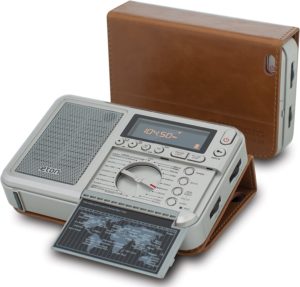 I should also mention that one great deal at time of posting is the Eton Executive Traveler.
I should also mention that one great deal at time of posting is the Eton Executive Traveler.
It’s a brilliant little radio for $34.99 shipped (note this affiliate link supports the SWLing Post).
One of our readers has been following the price of this little radio for months–it’s being sold at an all-time low at present.
What’s in your travel pack?
What’s your favorite travel radio? What features are important to you? Anyone else paranoid about missing early flights?
Do you enjoy the SWLing Post?
Please consider supporting us via Patreon or our Coffee Fund!
Your support makes articles like this one possible. Thank you!
Radio Romania celebrates 91 years
Many thanks to SWLing Post contributor, David Iurescia (LW4DAF), who shares the following article from Radio Romania International:
This Friday Radio Romania celebrates 91 years of existence. ‘Hello, hello, this is Radio Bucharest’ were the first words aired by this radio station on November 1st 1928, part of the first broadcast by the Radiotelephony Broadcasting Corporation in Romania.
The words were uttered by the then president of the aforementioned institution Dragomir Hurmuzescu, who was also the founding father of the Romanian radiophony. Along the years Radio Romania broadcast messages from leading figures who had their impact upon the country’s history.
Designed to be a means of information, education and entertainment, the Romanian public radio has been broadcasting for 91 years now adjusting its editorial policies and surviving the radical regime changes that took place during its existence, from the democratic system between the two world wars, to the right-wing dictatorship around WWll, or the communist dictatorship that followed.
Radio Romania celebrates 91st years of uninterrupted public service and broadcasts, 91 years of hard work and sacrifices but also of satisfactions in the sustained process of building the trust and confidence the station enjoys today, the institution’s president and director general Georgica Severin said on this occasion.
‘Either we speak about the accurate news on various daily events, the cultural broadcasts, the programmes devoted to theatre plays from national and world dramaturgy, or concerts and performances given by radio orchestras and choirs, this uninterrupted, relentless work has been always based on professionalism and respect for listeners’, Georgica Severin went on to say.
Besides its well-known channels, News and Current Affairs, Culture, Music and the Village Antenna, Radio Romania also boasts several regional and local stations, as well as the online channels devoted to children and young people.
The Romanian Public radio started to broadcast for listeners abroad as early as the 1930s and is currently broadcasting in 11 foreign languages: Arabic, Chinese, English, Hebrew, French, German, Italian, Serbian, Spanish, Russian and Ukrainian as well as in the Aromanian dialect.
On its 91th anniversary, Radio Romania scheduled a concert given by the National Radio Orchestra as well as an exhibition on its premises, which can be visited until November 5th under the suggestive title ‘Afghanistan, Faces of War’. The exhibition has on display photos taken by Radio Romania’s correspondent in that country Ilie Pintea.
The exhibition was inaugurated in Los Angeles under the high patronage of the country’s General Consulate in Los Angeles and the Cultural Institute in Bucharest in 2018 when Romania celebrated its 100th anniversary.
Click here to read this article at Radio Romania International.
FTIOM & UBMP, November 10-16
From the Isle of Music, November 10-16:
This week, our special guest is Kiki Valera, whose new album Vivencias en clave cubana is already becoming a critical and popular
sensation.
The broadcasts take place:
1. For Eastern Europe but audible well beyond the target area in most of the Eastern Hemisphere (including parts of East Asia and Oceania) with 100Kw, Sunday 1500-1600 UTC on SpaceLine, 9400 KHz, from Sofia, Bulgaria (1800-1900 MSK)
If you don’t have a shortwave radio or are out of range, you can listen live to an uplink from a listening radio in the Netherlands during the broadcast at
http://websdr.ewi.utwente.nl:8901/?tune=9400am
2. For the Americas and parts of Europe, Tuesday 0100-0200 UTC (New UTC) on WBCQ, 7490 KHz from Monticello, ME, USA (Monday 8-9PM EST in the US).
If you don’t have a shortwave or are out of range, you can listen to a live stream from the WBCQ website here (choose 7490) http://www.wbcq.com/?page_id=7
3 & 4. For Europe and sometimes beyond, Tuesday 1900-2000 UTC and Saturday 1200-1300 UTC on Channel 292, 6070 KHz from Rohrbach, Germany.
If you don’t have a shortwave radio or are out of range, you can listen live to an uplink from a listening radio in Europe.
Visit our Facebook page at https://www.facebook.com/fromtheisleofmusic
Uncle Bill’s Melting Pot, November 10 and 12:
The theme of Episode 138 is time.
The transmissions take place:
1.Sundays 2300-2330 UTC (6:00PM -6:30PM Eastern US) on WBCQ The Planet 7490 KHz from the US to the Americas and parts of Europe
If you don’t have a shortwave or are out of range, you can listen to a live stream from the WBCQ website here (choose 7490) http://www.wbcq.com/?page_id=7
2. Tuesdays 2000-2030 UTC on Channel 292, 6070 KHz from Rohrbach, Germany for Europe.
If you don’t have a shortwave radio or are out of range, you can listen live to an uplink from different web SDRs in Europe.
Visit our Facebook Page at https://www.facebook.com/UncleBillsMeltingPot


